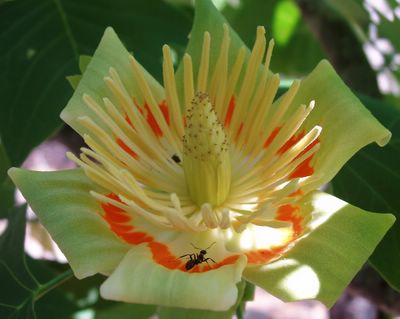
The ant in the picture is after the nectar produced by the flower and exuded along the orange surfaces. It is a sweet treat and we can be seen taking a taste now and then when we are lucky enough to find a fresh flower.

You can see the nectar if you look closely at the orange part of the flower above. It tastes like honey. Of course, I recommend inspecting the flower before tasting the nectar -- unless, of course, you don't mind eating an ant or two. :)
2 comments:
It's a very striking flower and as you say seldom seen unless you find it dropped to the ground. The architechture is very much like Magnolia, to which it is related.
Here in Athens, Liriodendron tulipifera, and what a melodic name that is!, is our main honey flow plant. There's always a race to see if the tulip poplars will get their flowers out before the last frost. The first year we kept honeybees we got a couple hundred jars out of two hives.
An apiary too, Wayne?
You're one of my heros, bro.
Post a Comment